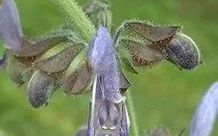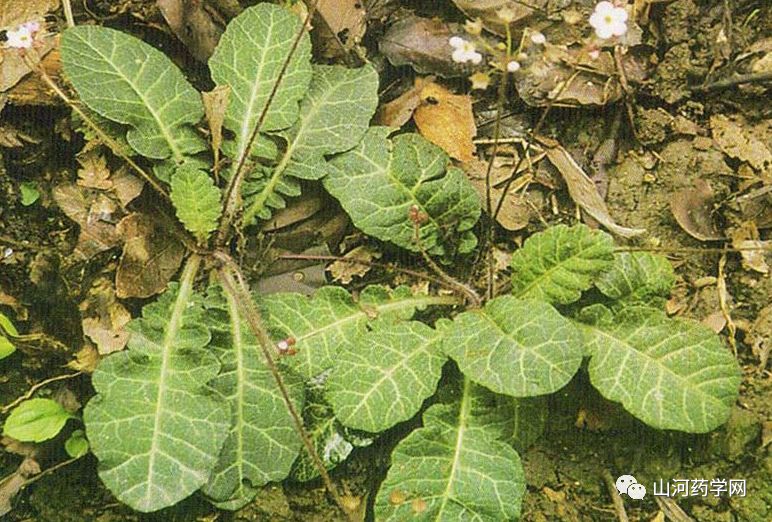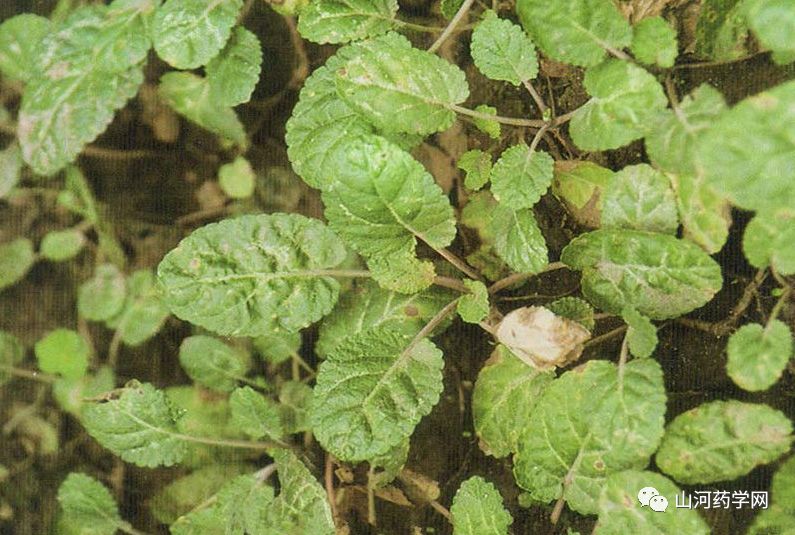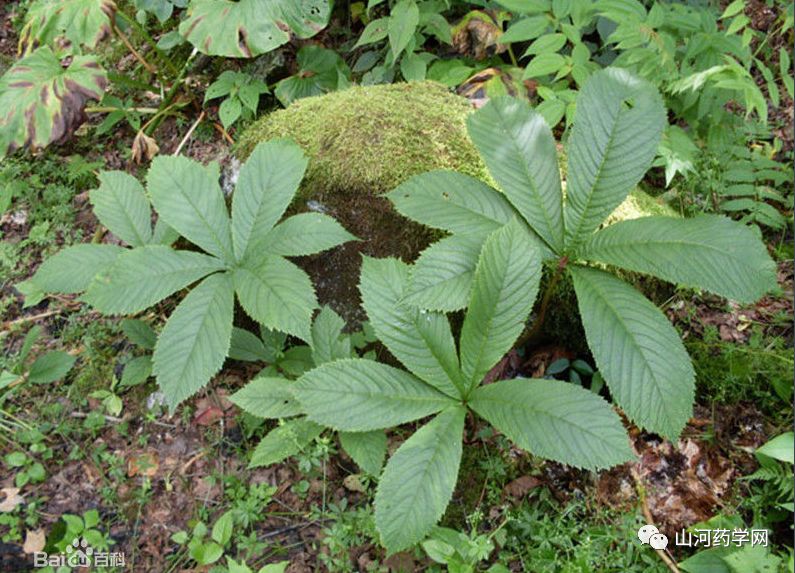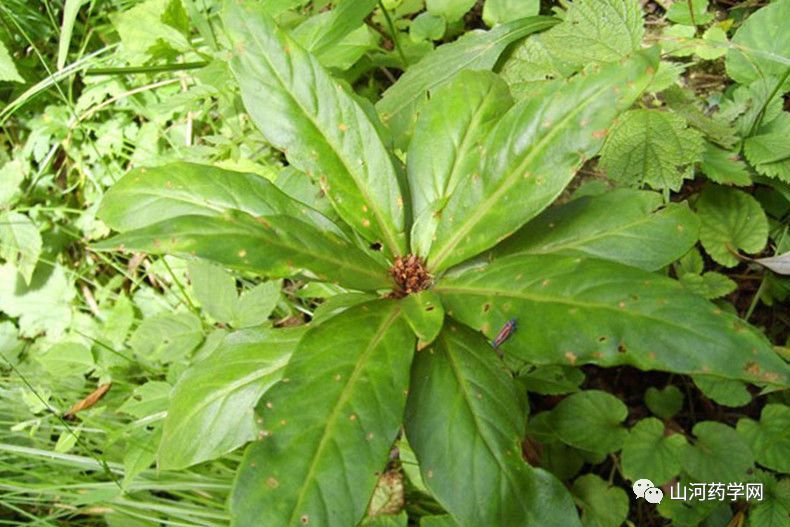| Danshen Dān Shēn | |
|---|---|
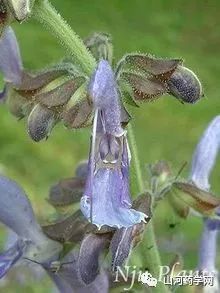
|
|
| Alias | Honggen, Dahongpao, Xueshen Gen, Xueshan Gen, Hong Danshen, Zidan Shen, Yishen, Mu Yangru, Zhuma, Shanshen, Zidan Ginseng, Shan Hongluobo, Huoxue Gen, Kaoshan Hong, Hongshen, Shaojiu Hu Gen, Yesuzi Gen, Shansuzi Gen, Mihuantou, Duoduo Huagen, Fengtang Guo, Qie Chan Cao, Chi Shen; Mu Yangru, Benmacao, Selected Jiu Hu Gen |
| Effects | Invigorates blood and alleviates pain, promotes blood circulation and regulates menstruation, clears the heart and relieves irritability. Used for irregular menstruation, dysmenorrhea, abdominal masses, stabbing pain in the chest and abdomen, hot bi pain, swelling and pain from sores, irritability and insomnia; liver and spleen enlargement, angina pectoris. |
| First Recorded In | Shennong Bencao Jing |
| Toxicity | Non-toxic |
| Meridians | Heart Meridian, Liver Meridian |
| Nature | Cold |
| Taste | Bitter |
Danshen (Dān Shēn)
[Source] Shennong Bencao Jing Basic Information
[Source] This product is the dried root and rhizome of the dicotyledonous plant Labiatae Danshen.
[Nature and Taste] Bitter, slightly cold. Enters the Heart and Liver Meridians.
[Effects] Invigorates blood, regulates menstruation, dispels blood stasis and alleviates pain, cools blood and resolves abscesses, clears the heart and relieves irritability, nourishes blood and calms the spirit.
[Indications] Irregular menstruation, dysmenorrhea, abdominal masses, stabbing pain in the chest and abdomen, hot bi pain, swelling and pain from sores, irritability and insomnia; liver and spleen enlargement, angina pectoris.
[Applications]
Used for pain in the chest and ribs, rheumatic pain, abdominal masses, swelling and pain from sores, trauma pain, irregular menstruation, dysmenorrhea, postpartum pain, etc. It is effective for chest and abdominal pain related to qi stagnation and blood stasis, often used in combination with Chuanxiong (Chuanxiong Rhizome). In treating chest and abdominal pain, it is often combined with Sha Ren (Amomum Fruit), Tanxiang (Sandalwood), and other herbs.
Used for warm diseases with heat entering the blood, skin rashes, and irritability. Often used with Xian Di Huang (Rehmannia Root), Shui Niu Jiao (Water Buffalo Horn), and Xuan Shen (Scrophularia).
Used for palpitations and insomnia. Often combined with Suan Zao Ren (Sour Jujube Seed), Bai Zi Ren (Platycladus Seed) and other herbs.
[Dosage] Decoction, 9-15g. For invigorating blood and dispelling stasis, it is recommended to use wine-fried.
[Precautions] Contraindicated with Li Lu (Veratrum). Use with caution in pregnant women.
[Adverse Reactions]
1) Some patients may experience stomach pain, decreased appetite, dry mouth and throat, nausea, and vomiting, related to Danshen’s ability to inhibit digestive fluid secretion. It is advisable to stop the medication and may take drugs like Weishu Ping or Prucalopride; in severe cases, subcutaneous injection of atropine may be required.
2) Some patients with late-stage schistosomiasis and liver and spleen enlargement may experience upper gastrointestinal bleeding after taking large doses of Danshen. It should be discontinued, and hemostatic agents and vitamins should be administered.
3) Danshen can cause allergic reactions, manifested as generalized skin itching, rashes, urticaria, and in some cases, accompanied by chest tightness, difficulty breathing, chills, dizziness, nausea, vomiting, restlessness, followed by pale complexion, cold limbs, sweating, decreased blood pressure, and even fainting and shock. Immediate intramuscular injection of epinephrine or dexamethasone and antihistamines should be administered, along with traditional Chinese medicine Sheng Mai San for adjustment.
Commentaries from Various Schools
1. Tao Hongjing: Danshen, many people take it and their eyes turn red, hence it should be hot in nature; now it is said to be slightly cold, which may be a mistake.
2. Gangmu: Danshen, according to Women’s Ming Theory, Si Wu Decoction treats women’s diseases, regardless of pre- or post-natal conditions, can be universally applied, only Danshen powder is indicated for the same treatment. This is because Danshen can break up stagnant blood, replenish new blood, stabilize pregnancy, expel dead fetus, stop excessive bleeding, and regulate menstruation, its function is similar to that of Dang Gui (Angelica Sinensis), Di Huang (Rehmannia), Chuanxiong, and Shao Yao (Peony).
3. Bencao Jing Shu: Danshen, Bencao Jing states it is bitter and slightly cold; Tao says it is hot and non-toxic, observing its main effects on heart and abdominal evil qi, with gurgling sounds in the intestines like flowing water, cold and heat accumulation, breaking up symptoms and removing masses, it seems to be a mild cold medicine; stopping irritability and fullness, benefiting qi, and according to Additional Records, nourishing blood, removing stubborn diseases in the heart and abdomen, strengthening the waist and spine, alleviating leg pain, dispelling wind evil and lingering heat, long-term use is beneficial, and it is certainly not a hot medicine; it should be considered as bitter, neutral, and slightly warm. It enters the hand and foot Shaoyin and foot Jueyin meridians. If the heart is deficient, evil qi will invade, causing irritability and fullness, and if prolonged, it will become a stubborn disease; if the liver is deficient, heat will generate wind, and if the liver’s qi and blood stagnate, it will lead to symptoms and masses, cold and heat accumulation; if the kidney is deficient and cold damp evil invades, it will cause back pain and leg pain; entering the three meridians will alleviate all suffering. Bitter can drain, warmth can disperse, hence it also addresses gurgling sounds in the intestines like flowing water. Long-term use benefits and nourishes qi and blood. Those from the north are superior.
4. Bencao Huiyan: Danshen is good for treating blood-related issues, removing stagnation and generating new blood, regulating menstruation and smoothing the meridians. It is indicated for both men and women with symptoms of vomiting blood, hematuria, and excessive bleeding, or disharmony of Chong and Ren meridians leading to fetal movement issues, or postpartum irregularities and blood stasis causing pain, or menstrual blockage causing lower abdominal pain, or liver and spleen stagnation causing irregular heat, or masses and distension due to blood stasis, or hernia pain causing irregular attacks, or leg and knee pain causing difficulty in walking, or heart and abdominal qi stagnation causing gurgling sounds in the intestines, or blood vessel obstruction causing red and painful eyes, hence Ming Theory attributes the four functions of Danshen to one herb. It nourishes and generates blood, functions similar to Dang Gui and Di Huang, regulates and consolidates blood, is as effective as Shao Yao, dispels stasis and generates new blood, is especially effective for women’s diseases, regardless of pre- or post-natal conditions, can be used regularly.
5. Bencao Fengyuan: Danshen in Bencao Jing treats heart and abdominal evil qi, gurgling sounds in the intestines like flowing water, all diseases are due to blood stasis and internal stagnation transforming into water symptoms. Stopping irritability and fullness benefits qi, as blood stasis is removed, irritability and fullness improve, restoring the righteous qi.
6. Bencao Qiuzhen: Danshen, the text states it can enter the heart pericardium and break up stasis, which fully describes the efficacy of Danshen. However, it is also discussed that it can generate new blood, stabilize pregnancy, regulate menstruation, relieve irritability, nourish the spirit, and treat all wind bi, excessive bleeding, masses, red eyes, hernia pain, and swelling and pain from sores, all of which are due to its ability to remove stasis, indicating that it can alleviate all diseases, not just for generating new blood and stabilizing pregnancy, or nourishing the spirit and calming the mind.
7. Chongqing Tang Suibi: Danshen promotes blood circulation, hence it is a key medicine for regulating menstruation and postpartum recovery. If menstruation is early or absent, and blood is insufficient to nourish the fetus leading to instability, or if postpartum blood has already circulated, one should not be misled by the claim of its four functions, nor should it be misused due to its name. Even if its functions are similar to the four substances, the Si Wu Decoction originally treats blood-related diseases, not for blood supplementation, as clarified by Shi Wanxian. The claim of nourishing the heart is also not like Goji Berries or Longan, which can truly nourish heart deficiency; as the heart houses the spirit and governs blood, if heart fire is too active, the spirit will be unsettled. Danshen clears the fire in the blood, thus calming the spirit; when the spirit is settled, the heart benefits. Any warm or hot evil entering the blood should also use it, which is the same principle. If the evil is in the qi level and misused, it will instead draw the evil into the blood, which must be used with caution.
8. Bencao Zhengyi: Danshen, Bencao Jing states it is slightly cold, Tao Hongjing has doubted this, and Miao Zhongchun also questioned it, until Zhang Shiwang changed it to slightly warm.
9. Bencao Jing: It mainly treats heart and abdominal evil qi, gurgling sounds in the intestines like flowing water, cold and heat accumulation; breaking up symptoms and removing masses, stopping irritability, and benefiting qi.
10. Wupu Bencao: Treats abdominal pain.
11. Additional Records: Nourishes blood, removes stubborn diseases in the heart and abdomen, strengthens the waist and spine, alleviates leg pain; dispels wind evil and lingering heat, long-term use is beneficial.
12. Tao Hongjing: Soak in wine and drink it, treats wind bi.
13. Yao Xing Lun: Treats weak legs, pain and bi, mainly for food poisoning; treats abdominal pain, and gurgling sounds in the intestines.
14. Rihua Zi Bencao: Nourishes the spirit and calms the mind, promotes the flow of the meridians. Treats cold and heat fatigue, joint pain, and paralysis of the limbs; dispels pus and alleviates pain, promotes muscle growth; breaks up stagnant blood and replenishes new blood; stabilizes pregnancy and expels dead fetus; stops excessive bleeding and regulates women’s menstruation; alleviates skin sores, goiter, swelling, and toxins, and treats headaches, red eyes, and heat-induced mania.
15. Dian Nan Bencao: Nourishes the heart and calms the spirit. Treats forgetfulness, anxiety, and insomnia.
16. Gangmu: Invigorates blood and opens the heart pericardium. Treats hernia pain.
17. Yunnan Chinese Herbal Selection: Invigorates blood, dispels stasis, calms and alleviates pain. Treats irregular menstruation, dysmenorrhea, rheumatic pain, uterine bleeding, hemoptysis, mastitis, and abscesses.
18. Bencao Xinbian: Danshen, bitter in taste, slightly cold in nature, non-toxic. Enters the heart and spleen meridians. Specializes in regulating meridians, alleviating joint and muscle pain, generating new blood, removing stagnant blood, stabilizing pregnancy, expelling dead fetus, breaking up masses, and stopping excessive bleeding. Alleviates leg pain and softens the body, reduces red and swollen eyes. Dispels evil spirits and ghosts, nourishes the righteous and expels the evil, also effective for gurgling sounds in the intestines. Can only be used as an adjunct, not as a primary medicine; used for supplementation or attacking, it is an indispensable herb in the medicine cabinet. Its efficacy is particularly significant before and after childbirth, generally more is used before childbirth, and less after, leading to more successes and fewer failures.
Dietary Value
The root and rhizome of the herbaceous plant Danshen from the Labiatae family. Grown in Jiangsu, Anhui, Hebei, Sichuan, and other regions. Harvested in spring and autumn, cleaned, and dried. Sliced or cut into sections, used raw or stir-fried in wine.
[Properties] Bitter in taste, slightly cold in nature. Can invigorate blood, dispel stasis, cool blood, and calm the spirit.
[References] Contains Danshenone, protocatechuic aldehyde, protocatechuic acid, Danshenol, vitamin E, etc.
Can dilate coronary arteries, increase coronary blood flow, improve myocardial ischemia, infarction, and cardiac function, regulate heart rhythm, and dilate peripheral blood vessels, improving microcirculation; can enhance the body’s tolerance to hypoxia; has anticoagulant effects, promotes fibrinolysis, inhibits platelet aggregation, and prevents thrombosis; can lower blood lipids and inhibit the formation of coronary atherosclerosis; can inhibit or alleviate liver cell degeneration, necrosis, and inflammatory responses, promoting liver cell regeneration, and has anti-fibrotic effects; can shorten the recovery period of red blood cells and hemoglobin, increase reticulocyte count, promote tissue repair, and accelerate fracture healing; has a central nervous system inhibitory effect; has anti-tumor effects; can enhance the body’s immune function; can lower blood sugar; and has inhibitory effects on various bacteria, including Mycobacterium tuberculosis.
[Uses] Used for menstrual irregularities, dysmenorrhea, and postpartum abdominal pain due to blood stasis; angina pectoris due to coronary heart disease, atherosclerosis; chronic hepatitis, cirrhosis, abdominal masses or tumors; chronic pulmonary heart disease, bronchial asthma; palpitations due to insufficient blood supply to the heart or excessive heart fire, irritability, and insomnia.
[Dosage] 9-15g per day. Decoction, infusion in wine, or tea.
[Additional Formulas]
1. Tianqi Danshen: Sanqi 100g, Danshen 15g. Decoct to obtain concentrated juice, add an appropriate amount of sugar, and dry into granules. Each dose is g, dissolved in warm water for drinking. Alternatively, the two herbs can be ground into fine powder, each dose g, mixed with an appropriate amount of sugar, and brewed as tea.
Derived from National Pharmaceutical Product Directory. This formula uses both herbs to invigorate blood and dispel stasis, lower blood lipids, and increase coronary blood flow. Used for angina pectoris due to coronary heart disease.
2. Danshen Decoction: Danshen 15g, Tanxiang (Sandalwood), Sha Ren (Amomum Fruit) each 5g. First decoct Danshen in water, then add Tanxiang and Sha Ren, boil and drink. Can add an appropriate amount of brown sugar for flavor.
Derived from Shifang Ge Guo. This formula uses Danshen to invigorate blood and dispel stasis, while Tanxiang and Sha Ren promote qi and alleviate pain. Used for blood stasis and qi stagnation causing abdominal pain. Now also used for angina pectoris due to coronary heart disease.
3. Danshen Honghua Wine: Danshen 60g, Honghua (Safflower), Yuelihua (Rose) each 15g. Soak in 500g of white wine. Drink 1-2 small cups each time.
This formula uses all three herbs to invigorate blood and dispel stasis, and regulate menstruation. Used for blood stasis causing menstrual blockage, irregular menstruation, and dysmenorrhea. Also used for angina pectoris due to coronary heart disease.
4. Danshen Yuzhu Decoction: Danshen, Yuzhu (Polygonatum), Shan Zha (Hawthorn) each 15g. Decoct in water for drinking.
This formula uses Danshen to invigorate blood and dispel stasis, along with Yuzhu and Shan Zha to lower blood lipids. Used for angina pectoris due to coronary heart disease, atherosclerosis, and hyperlipidemia.
Traditional Chinese Medicine Story
Danshen is a commonly used Chinese medicine, also known as Honggen, Zidan Shen, Xueshen Gen, etc., due to its medicinal root being purple-red in color. Additionally, it is colloquially referred to as “Danxin” (Red Heart), which is related to a touching story.
It is said that a long time ago, in a fishing village by the East Sea, there lived a young man named “A Ming”. A Ming lost his father at a young age and lived with his mother, relying on each other. Growing up in the wind and waves, he developed excellent swimming skills, earning the nickname “Little Dragon”. One year, A Ming’s mother suffered from a gynecological disease, often experiencing excessive bleeding. Many doctors were consulted, but none could cure her, leaving A Ming in despair. Just then, someone mentioned an unnamed island in the East Sea, where a type of herb with purple-blue flowers and red roots grew. Boiling the roots of this herb could cure his mother’s illness. Upon hearing this, A Ming was overjoyed and decided to go to the unnamed island to gather herbs. The villagers were worried for A Ming, as the sea route to the unnamed island was fraught with hidden reefs and turbulent waters, with nine out of ten people perishing, akin to passing through the “Gates of Hell”. However, time was of the essence, and A Ming, eager to save his mother, resolutely set out to sea to gather herbs.
The next day, A Ming sailed out to sea. Using his superb swimming skills, he navigated past hidden reefs and rushed through dangerous rapids, finally passing through the “Gates of Hell” and successfully landing on the unnamed island. Once ashore, he searched for the herb with purple-blue flowers and red roots. For every plant he found, he quickly dug up its roots, and before long, he had gathered a large bundle. Upon returning to the fishing village, A Ming diligently served his mother the medicine daily, and she soon recovered from her illness.
The villagers greatly admired A Ming for risking his life to gather herbs for his mother’s treatment. They said this herb embodied A Ming’s sincere heart, thus naming it “Danxin” (Red Heart). Over time, the name evolved into “Danshen”.
The “Danshen” mentioned in the story was first recorded in the Han Dynasty’s Shennong Bencao Jing. Traditional Chinese Medicine believes that it is bitter and slightly cold, with effects of invigorating blood circulation, dispelling stasis and alleviating pain, clearing the heart and relieving irritability, and cooling blood to resolve abscesses, suitable for various conditions caused by blood stasis, blood heat, or a combination of both, especially commonly used in gynecological, internal medicine, and trauma cases associated with blood stasis and heat. According to the story, A Ming’s mother’s bleeding condition was likely caused by a combination of blood stasis and heat, hence the effectiveness of this herb. Today, this herb is also made into injections, pills, and other forms for treating cardiovascular and cerebrovascular diseases, all showing good efficacy.
Disclaimer: The content on this site is added and organized by users, for learning and reference only. The information on the site may not be accurate, comprehensive, or up-to-date, and the content should not be the final basis for diagnosing or treating diseases. Shanhe Pharmaceutical Network reminds users that if there are any physical discomforts, please seek medical attention promptly. Thank you for your support and love; we will strive to do better~!!!


